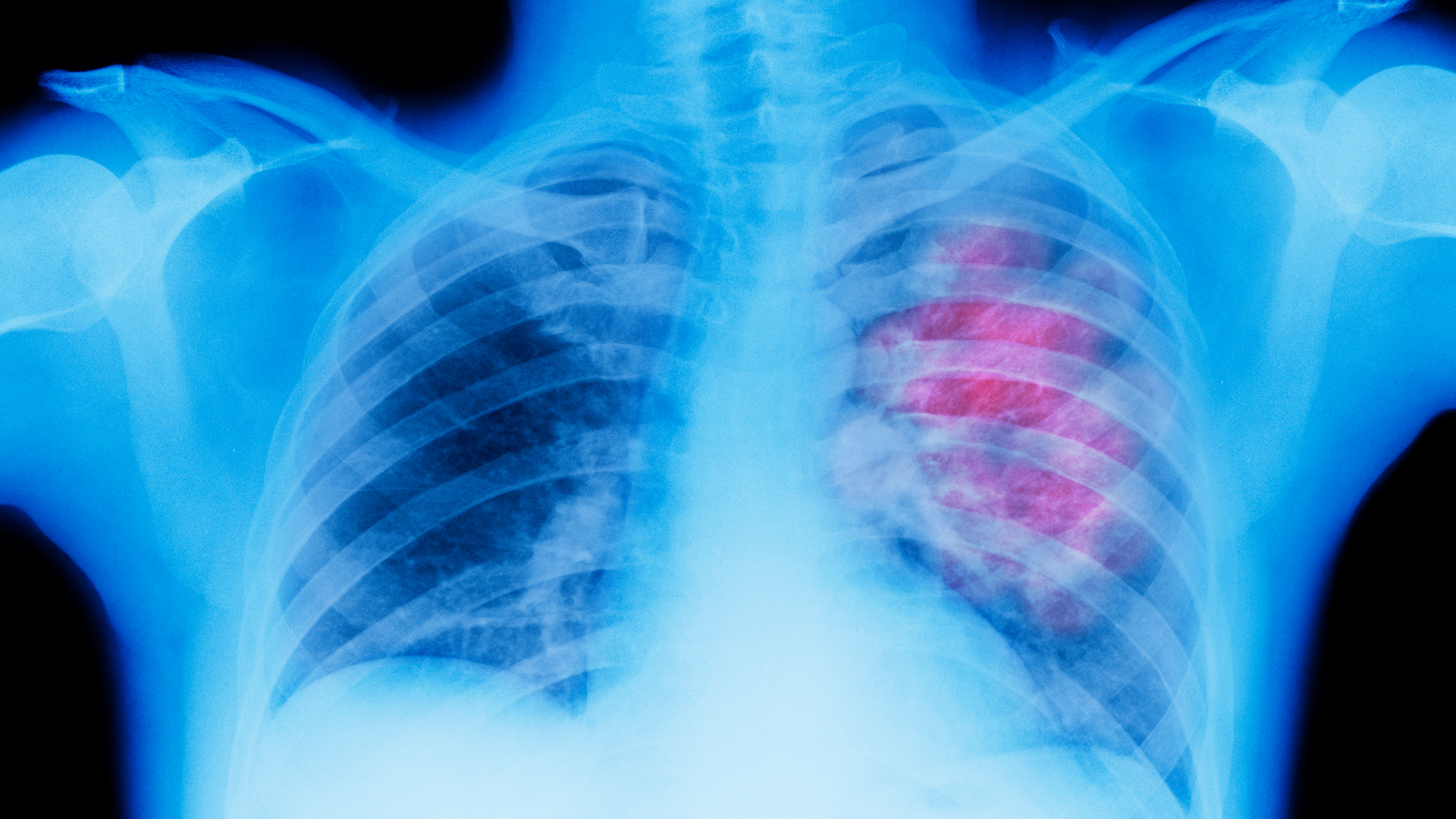This AI model can tell if you're at high risk of lung cancer by analyzing a single X-ray scan
An AI model found that 28% of non-smokers are at high risk of developing lung cancer, with 2.9% of high-risk individuals developing the disease within six years.

An artificial intelligence (AI) program can determine whether a non-smoker is at high risk of developing lung cancer by examining just one X-ray image, new research shows.
"This AI tool opens the door for opportunistic screening for never-smokers at high risk of lung cancer, using existing chest X-rays," said study author Dr. Michael T. Lu, co-director of the Cardiovascular Imaging Research Center at Massachusetts General Hospital, in a statement.
That's crucial because the National Comprehensive Cancer Network (NCCN) only recommends lung cancer CT scans for individuals with 1.3% or higher risk of developing lung cancer within six years — which currently includes smokers or those with a family history of lung cancer.
However, 10 to 20% of lung cancers occur in non-smokers, according to the American Cancer Society. But because doctors have no way to predict which non-smokers are at greatest risk of lung cancer, they've been excluded from federal guidelines on screening recommendations.
In the new study, researchers tested their AI model, dubbed "CXR Lung-Risk" on thousands of chest X-rays from non-smokers aged between 55- and 74-years-old. The AI identified 28% as being at high risk of lung cancer.
Related: AI is transforming every aspect of science. Here's how.
Of this high-risk group, nearly 3 in 100 developed lung cancer within six years — which is more than double the minimum threshold that triggers a screening recommendation. The researchers presented their results on at the annual meeting of the Radiological Society of North America (RSNA), which ran between Nov. 26 and 30.
Get the world’s most fascinating discoveries delivered straight to your inbox.
CXR Lung-Risk is a deep-learning model, meaning it learns by recognizing patterns and from the system's own experience moving the data between many layers of neural networks, in a similar way to how humans learn. The researchers trained the algorithm with 147,497 chest X-rays of 40,643 asymptomatic smokers as well as non-smokers from the Prostate, Lung, Colorectal, and Ovarian (PLCO) Cancer Screening Trial that ran between 1993 and 2001. Some of these people went on to develop lung cancer within six years of inclusion in the trial.
The AI then looked at unlabeled X-rays, taken between 2013 and 2014, from 17,407 non-smokers to determine the odds of a future diagnosis, categorizing patients into low-, moderate- and high-risk groups.
The 2.9% of patients in the high-risk group who went on to develop lung cancer had 2.1 times greater risk of developing lung cancer compared with the low-risk group. They were also well in excess of the 1.3% risk threshold for triggering a screening recommendation.
"Since cigarette smoking rates are declining, approaches to detect lung cancer early in those who do not smoke are going to be increasingly important," Lu said. Since cigarette smoking rates are declining, he added, detecting lung cancer in those who don't smoke is going to become more important in the coming years.

Keumars is the technology editor at Live Science. He has written for a variety of publications including ITPro, The Week Digital, ComputerActive, The Independent, The Observer, Metro and TechRadar Pro. He has worked as a technology journalist for more than five years, having previously held the role of features editor with ITPro. He is an NCTJ-qualified journalist and has a degree in biomedical sciences from Queen Mary, University of London. He's also registered as a foundational chartered manager with the Chartered Management Institute (CMI), having qualified as a Level 3 Team leader with distinction in 2023.


